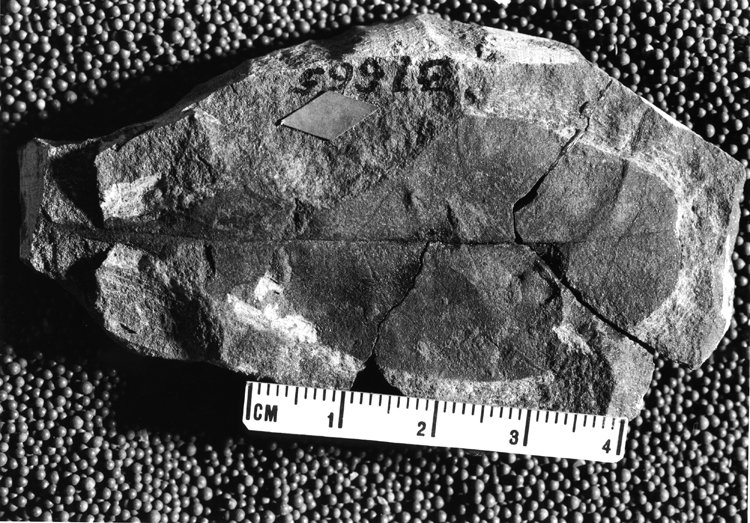Locality
From Hollick (1930) (p. 113-114)
"Yukon River, north bank, at Blatchford's mine (original No. 3AH19); collected by Arthur Hollick and Sidney Paige in 1903 (lot 3258)."
Description
From Hollick (1930) (p. 113-114)
"Leaf spatulate-obovate, entire, 6 centimeters in length by 3 centimeters in maximum width, rounded above to an obtuse, emarginate apex, tapering below to a narrow, acute, decurrent base; nervation pinnate; secondary nerves leaving the midrib at obtuse angles of divergence, curving upward and coalescing with the tertiary nervation along the margin."
Remarks
From Hollick (1930) (p. 113-114)
"This leaf resembles Sapotacites obovata Velenovsky (1884) (p. [50] 3, fig. 6) from the Cenomanian of Bohemia; but the base of our specimen is narrower and more tapering than is indicated in Velenovsky's figure, and the secondary nerves appear to subtend more obtuse angles with the midrib. In its general features it also resembles Myrica emarginata Heer (1882) (p. 66, pl. 41, fig. 2; pl. 46, fig. 12e) from the Atane beds of Greenland, but it is more expanded laterally in the upper part, and the apex is more constricted. In either event, however, the generic designation is open to question, and our leaf might about equally well be referred to the genus Bumelia, as may be seen by comparison with the living B. lanuginosa Persoon, in which the leaves are often more or less emarginate at the apices."
